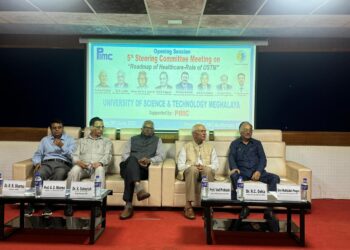World Wetlands Day was celebrated in a befitting manner at Chandubi Beel on Wednesday.
Minister for Environment and Forest, Parimal Suklabaidya, who was the chief guest in the function organised by the Environment and Forest Department, emphasised on the importance of wetlands not only for people but the planet Earth as well and the rich source of wetlands in Assam. The Minister mentioned about Dora Beel and Deepor Beel, which are abundant in fish and home to migratory birds. “Wetlands are vital ecosystem protecting the health of our planet,” he quipped.
He called for the support and cooperation of all for the protection of wetlands in the state.
The function, was attended, among others, by MLA Palashbari, Hemanga Thakuria, Deputy Commissioner, Kamrup, Kailash Karthik, PCCF cum HoFF, Amit Sahai and other senior forest officials.
Later, Minister Suklabaidya along with MLA Palashbari, Thakuria, released 59 numbers of black softshell turtles into Chandubi Beel. The endangered softshell turtles were nurtured by an NGO,Turtle Survival Alliance in collaboration with State Environment and Forest Department.
A guiding manual entitled ‘Turtle Trail’ for trainers on the freshwater turtle and tortoises found in Assam and other States of the Northeast Region was released by Minister Suklabaidya.
Suklabaidya also planted saplings on the occasion. He also gave away certificates to the winners of the drawing competition.
World Wetlands Day is celebrated every year on 2 February in different part parts of the world with the aim to raise global awareness about the significance of wetlands. World Wetlands Day marks the date of the Convention on Wetlands adoption which was adopted on 2nd February in the year 1971 in Ramsar, Iran.
This is the first year when the World Wetlands Day will be observed as a United Nations international day, following its adoption by the UN General Assembly on August 30, 2021.
This year’s theme is ‘Wetlands Action for People and Nature’.
India has 46 Ramsar sites, which include the Deepor Beel in Assam, Chilika Lake in Odisha, Keoladeo National Park in Rajasthan, Harike Lake in Punjab, Loktak Lake in Manipur and Wular Lake in Jammu and Kashmir.
All this cover 7.7 lakh hectares – or 4.6 per cent of India’s geographical area – the highest in South Asia, according to a report of NGO Wetland International.









